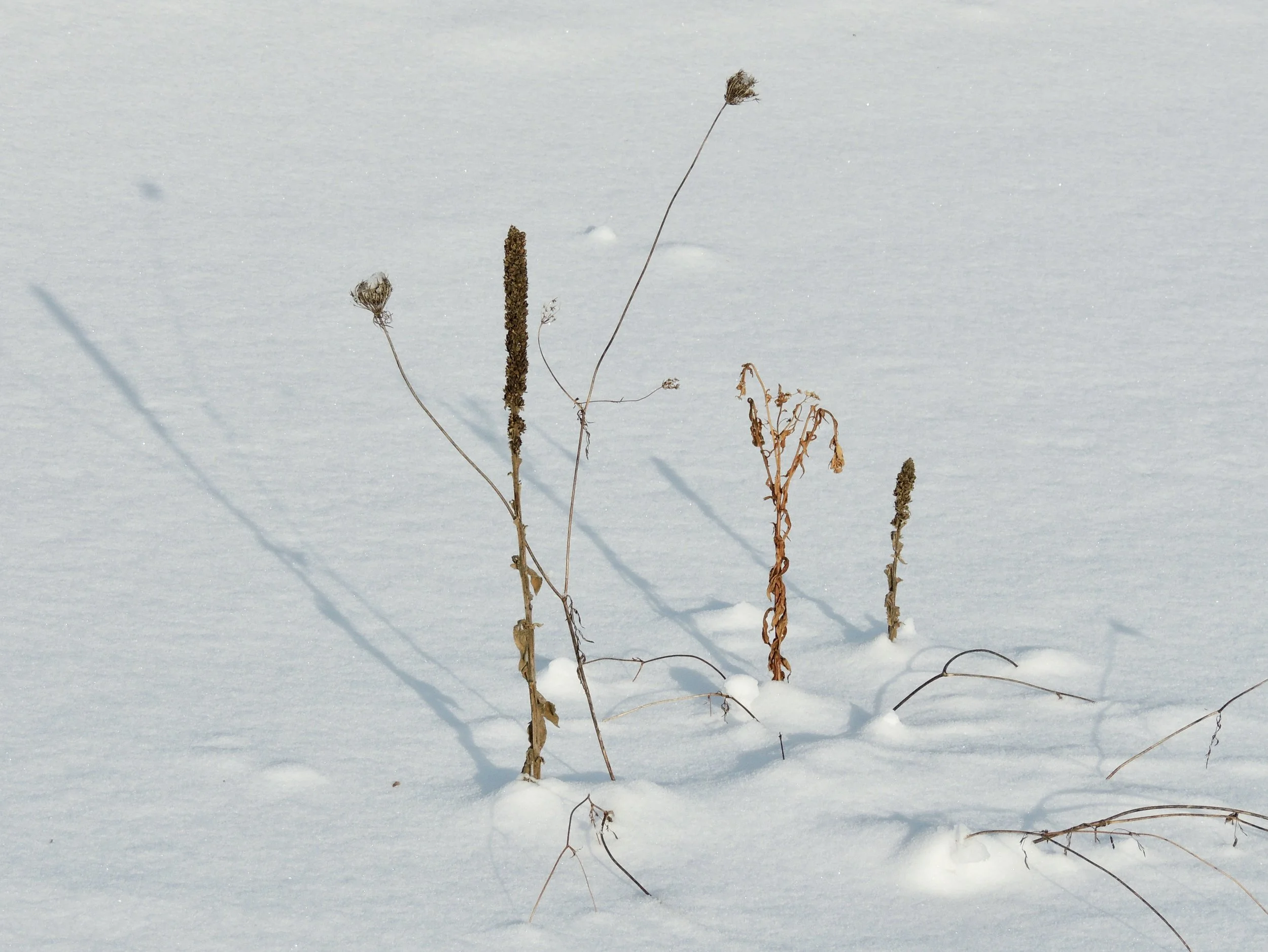Into the Woods with Curio: Winter Weeds
Doug Smith
“But God, being rich in mercy, because of His great love with which He loved us, even when we were dead in our transgressions, made us alive together with Christ (by grace you have been saved)…” Ephesians 2:4-5
Now that winter has finally arrived it’s a good time to go for a walk outside. Keep an eye out for birds and other wildlife, of course, but don’t overlook winter weeds. That’s right – weeds! These remnants of summer’s flowers, though seemingly lifeless now, own some fascinating features, and have interesting stories to tell.
With its tall stalk and large pods bursting with silky seeds, milkweed is a familiar sight to many. The old soccer field is one of the best places to find it at camp. If there are still some seeds left take a few in your fingers to enjoy their softness, then let them go into the wind. This is how the plant disperses them, though not as randomly as it would seem. The pod is designed to open from the top down, with the seeds arranged to release a few at a time with the wind. This prevents the seeds from just dropping to the ground around the parent plant. The fine filaments of the seeds’ parachutes take them across the fields instead.
Another tall plant is mullein, which grows from one to two metres high. It needs an open, sunny location, but isn’t picky about the soil, even growing in gravel. Look for them along the railroad bed at camp. The spiky top of their tall stalks is covered in cup-like seedheads, from which the tiny seeds fall out when the stalk is shaken, looking like black pepper on the snow. Dried mullein stalks were once dipped in hot tallow for use as torches in Europe.
The delicate, umbrella-like tops of Queen Anne’s lace wave on their long stems in the winter wind. Resembling a bird’s nest, the expired flowerheads contain the plant’s many seeds. Each of the small seeds has several rows of spines, which attach to animals as they brush against the plants when they pass by it. Yet another clever dispersal method employed by weeds! Bite one of these seeds and you’ll experience a cooked carrot taste, which explains its other name, wild carrot. The seeds can also be used to make tea. Look for Queen Anne’s lace in any open spot along the camp road.
If you venture down into the Inner trails, you may find a stand of tall plants with clusters of dry flowers. This is Joe Pye weed, named after an individual native American who introduced the healing properties of this plant to early settlers in New England. He was just sharing what his fellow natives had known for generations, that this ‘weed’ can help cure a variety of ailments, from fevers, colds and chills to a sore womb after childbirth.
There are more winter weeds to be found as you walk along the roadsides or through the open fields at camp, or near your home. Each exhibits amazing traits, and are wonderful examples of God’s awesome Creation.
